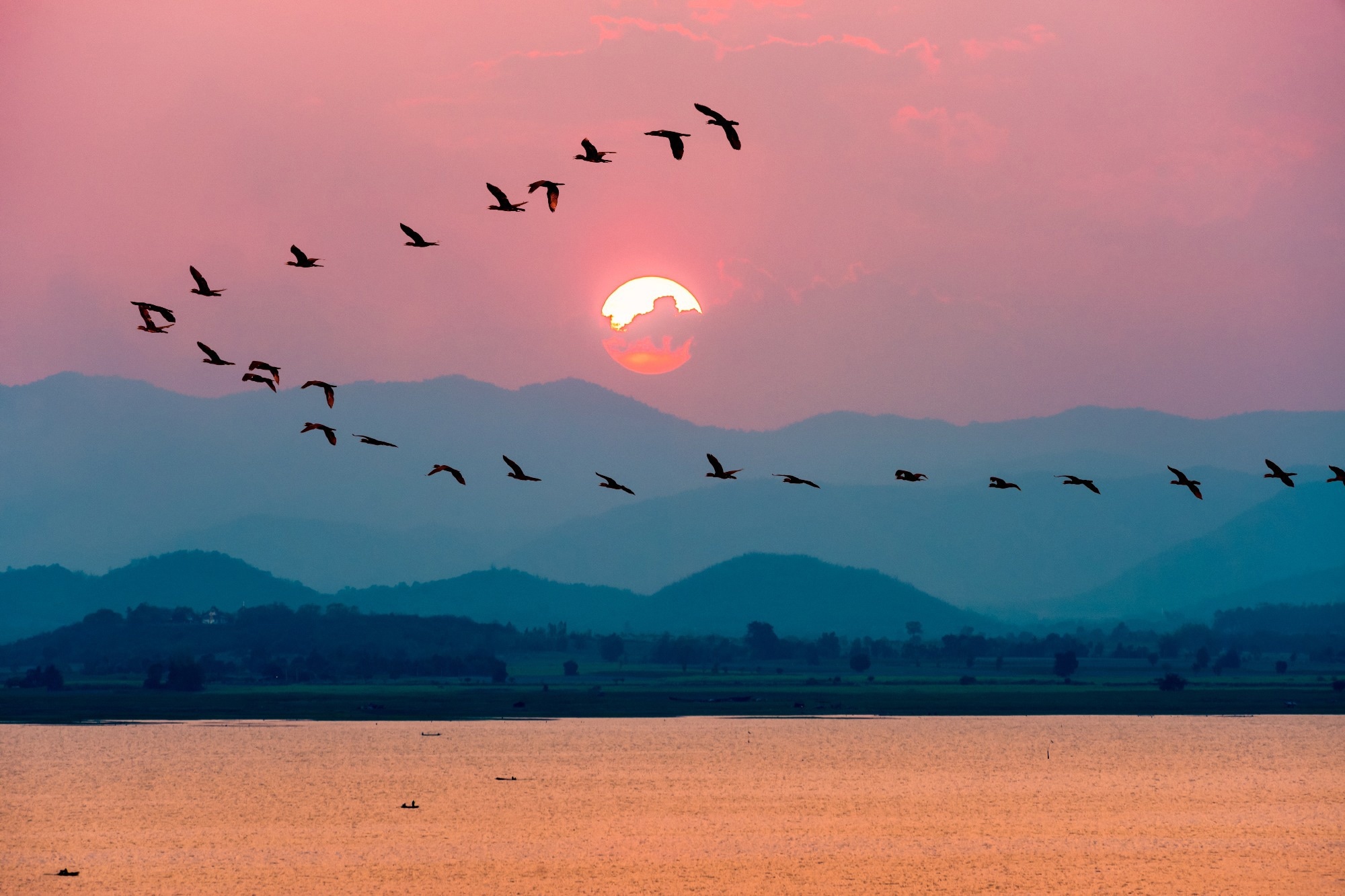Reviewed by Mila PereraOct 26 2022
Birds that migrate at night often face risks on their journeys. Aside from the higher risk of collisions with buildings or communication towers, light pollution adds additional hazard.

Image Credit: Shutterstock.com/Yongkiet Jitwattanatam
According to new research, birds attracted to the glow of artificial light at night are enticed into locations with higher amounts of airborne toxic chemicals. The findings were published in the journal Global Change Biology.
We examined the correlation between the concentration of airborne toxic chemicals, artificial light at night, and the weekly abundance of 165 nocturnally migrating songbird species. What we found is that light pollution does indeed increase exposure to toxic chemicals when birds stop to rest during spring and fall migration. Surprisingly, we also found that exposure to toxic chemicals is high during the non-breeding season, a time when birds typically avoid light pollution.
Frank La Sorte, Study Lead Author, Cornell Lab of Ornithology
The only time that did not reveal a greater exposure to toxic chemicals was during the breeding period when songbirds typically nest in habitats away from areas of human activity.
The scientists examined the prevalence of 479 toxic chemicals from 15,743 emitting facilities across the continental United States with levels of artificial light at night. They identified a correlation between increased amounts of airborne toxic chemicals and increased light pollution.
The researchers then used information from the Cornell Lab’s eBird program to cross-reference this data with the weekly abundance of 165 night-migrating songbird species throughout their yearlong life cycles.
One region of special concern is along the Gulf of Mexico, especially in Texas and Louisiana. Migratory birds that spend the winter in this region are being exposed to higher concentrations of airborne toxic chemicals for a longer period—the non-breeding season makes up the largest portion of these species’ annual life cycles.
Frank La Sorte, Study Lead Author, Cornell Lab of Ornithology
According to investigations, air pollution has forced some species to stop migrating, shifted the altitude at which they migrate, or changed their path altogether. Long-term contact with toxic chemicals can affect how cells and organs work, and contamination can reach the young birds through the transfer of substances from a nesting female to her eggs.
Overall, the research demonstrates how observations made by eBird volunteers help scientists better comprehend the spectrum of effects that light pollution has on night-migrating birds.
Efforts to reduce light pollution during the spring and autumn would reduce the chances of toxic chemical contamination during migration stopovers, which would improve survival and reproductive success. However, this would have no effect on the long-term exposure occurring along the US Gulf Coast, a region that could be a significant source of toxic chemical contamination for North American birds.
Frank La Sorte, Study Lead Author, Cornell Lab of Ornithology
The Wolf Creek Charitable Foundation and the National Science Foundation funded the study.
Journal Reference
La Sorte, F., et al. (2022) Light pollution enhances ground-level exposure to airborne toxic chemicals for nocturnally migrating passerines. Global Change Biology. doi.org/10.1111/gcb.16443.